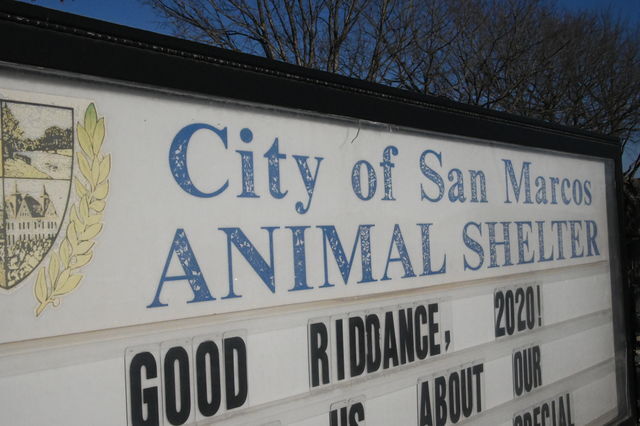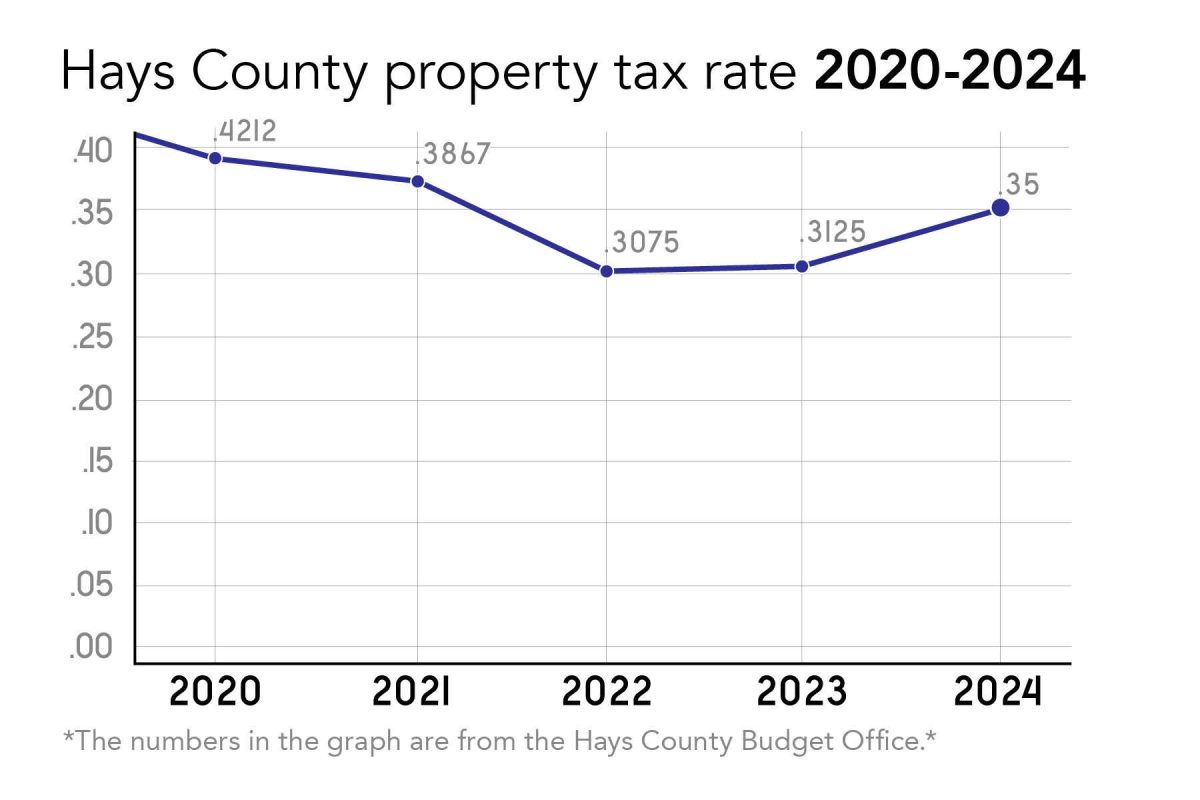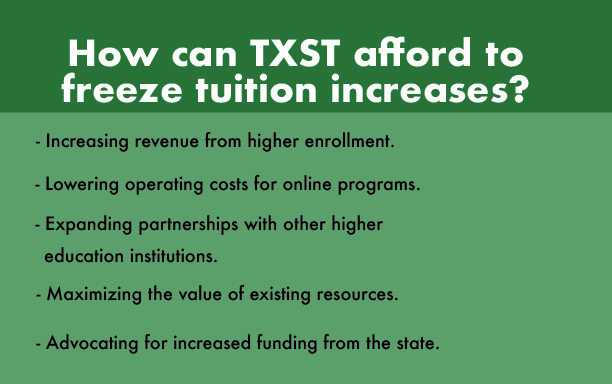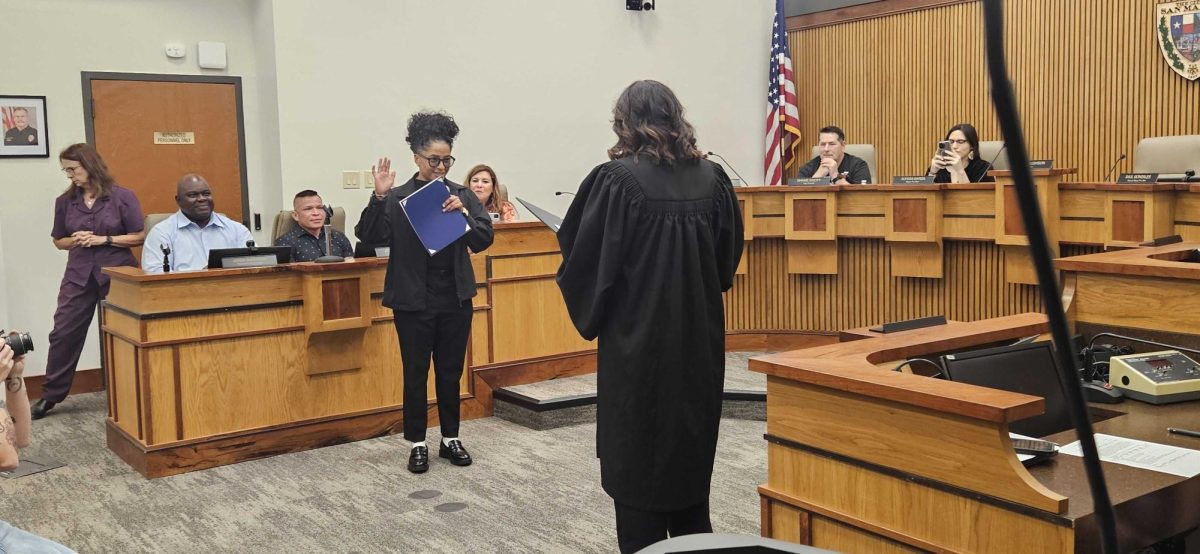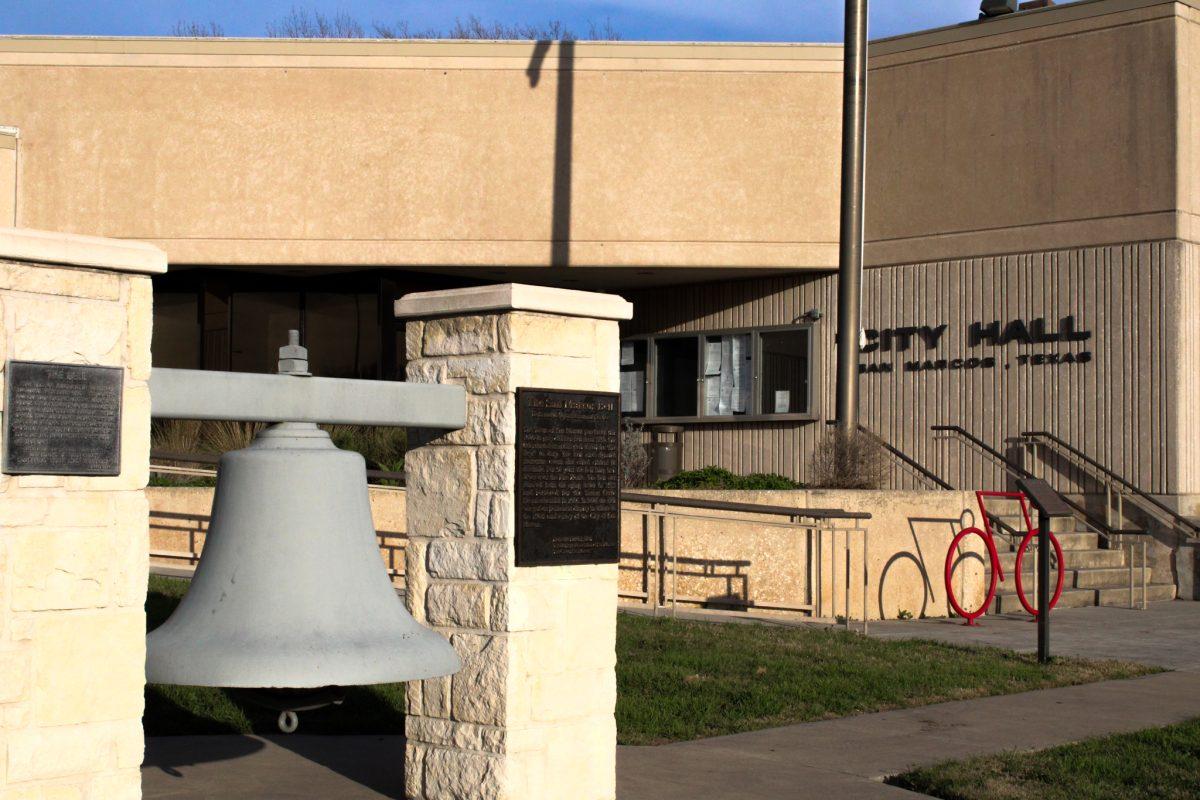Animals at the San Marcos Regional Animal Shelter are still finding their forever homes as the shelter continues to conquer its adoption and foster rate goals despite COVID-19 restrictions.
In December, the animal shelter surpassed its goal of 120 new adoptions with 131. Although the shelter moved to a virtual format, it still managed to find forever and short-term homes for its animals in addition to providing foster services.
Adopting or fostering an animal is a process the shelter is happy to help with, Caelin Bird, a part-time shelter technician, says. However, with the recent closing of San Marcos facilities, the process has been limited to protect all parties involved.
“Some people may have a new year’s resolution and they want to get a new pet, and we are more than happy to accommodate for that type of thing,” Bird says. “Of course, we want to make sure to stay home and have a good situation for them to go into but, since we, the city, did close [to] the public this month, we are back and doing adoption by appointment only, which limits the number of adoptions we do per day.”
The shelter has invested in its curbside service abilities to assist visitors who booked an online appointment find an animal to adopt or foster.
“Adopters are not coming into the actual shelter if they’re there to meet any animal,” Christie Banduch, animal shelter supervisor, says. “We have a play yard, an outdoor play [yard], at the shelter instead. We’ll have them [go] through like a side gate. We’ll put the animals in the play yard with them, [and] we’re kind of there if they have any questions out there.”
If visitors decide to adopt, they will be sent back to their car where they can virtually sign the adoption paperwork. Adopters can even take their pet home the same day.
During the holidays, the shelter usually sees an increase in adoptions or families coming in to adopt their first pet. Banduch says adoption rates change each month for a variety of reasons.
“We typically average anywhere from 100 to 150 adoptions a month,” Banduch says. “It goes up and down; there’s kind of a pattern that you see every year for adoptions and then, for example, when the kids go back to school in August, it’s like adoptions drop. I think it’s just because everybody’s so focused on getting the kids back to school and just the world getting back to normal. Then it’ll usually start picking back up as we get toward the holidays.”
While new animals may get adopted within a short period of time, Banduch says some animals stay at the shelter for long periods.
“Probably the average amount of time is two weeks, but you have to factor in that we take in a lot of animals; we take in between four to five hundred animals a month,” Banduch says. “The vast majority of them are coming in [as strays]. Some of them are here for hours before we find an owner, then we have others that, you know, who kind of end up as our long stays and so those long-stay animals just need a little bit longer to find a home.”
Those looking to adopt or foster are aware of the animal’s characteristics before making a decision. While Bird assists in adoptions, she also cares for the animals, which allows her to get to know them each individually.
“While the animals are in our care, we take notes on their behavior,” Bird says. “So, we’ll take down if a dog is house trained. We will write it down if a cat is super friendly, things like that. So, whenever a potential adopter comes into the shelter, we can ask them, ‘Well, what type of animal are you looking for?’, and then point them toward something that may suit their needs better.”
Mary Weinand, a Texas State alumna, adopted her cat, Sasuke, last fall and admits the process was different than expected.
“My sister and I actually adopted him because we lived together, and we had to make an appointment, and we were the only ones there, which was like so strange to go to a shelter [appointment] with no one there,” Weinand says.
After her experience, Wienand hopes more people, especially college students, choose to adopt pets rather than purchase them from pet stores. She recommends adopting cats, which she says can sometimes get stereotyped as bad pets.
“I would always encourage college students to adopt cats over dogs because we live in an apartment-based community,” Weinand says. “Cats are like, I feel, a more viable option because dogs require a little bit more space and maintenance.”
As the shelter continues to have animals in its facility adopted, it also allows qualified citizens to foster animals.
“Fostering is similar to adoptions, you’re taking an animal home with you but it’s just a much more temporary setup,” Banduch says. “Sometimes that’s because the animal has a medical need, like maybe [for example] it was hit by a car and had to have surgery on a broken bone, you know, and so, that animal needs somewhere other than the shelter that’s quieter and more comfortable.”
As more people schedule appointments and consider adopting or fostering, Banduch says people should be aware of the devotion needed to have a pet.
“I think for me the big takeaway is that I want somebody who’s looking at adopting or considering it,” Banduch says. “The big takeaway for them, I think, is it’s like taking home a toddler for 15 years, and I want them to be ready for that level of commitment.”
Adopting or fostering an animal is a process the shelter is happy to help with, Caelin Bird, a part-time shelter technician, says. However, with the recent closing of San Marcos facilities, the process has been limited to protect all parties involved.
“Some people may have a new year’s resolution and they want to get a new pet, and we are more than happy to accommodate for that type of thing,” Bird says. “Of course, we want to make sure to stay home and have a good situation for them to go into but, since we, the city, did close [to] the public this month, we are back and doing adoption by appointment only, which limits the number of adoptions we do per day.”
The shelter has invested in its curbside service abilities to assist visitors who booked an online appointment find an animal to adopt or foster.
“Adopters are not coming into the actual shelter if they’re there to meet any animal,” Christie Banduch, animal shelter supervisor, says. “We have a play yard, an outdoor play [yard], at the shelter instead. We’ll have them [go] through like a side gate. We’ll put the animals in the play yard with them, [and] we’re kind of there if they have any questions out there.”
If visitors decide to adopt, they will be sent back to their car where they can virtually sign the adoption paperwork. Adopters can even take their pet home the same day.
During the holidays, the shelter usually sees an increase in adoptions or families coming in to adopt their first pet. Banduch says adoption rates change each month for a variety of reasons.
“We typically average anywhere from 100 to 150 adoptions a month,” Banduch says. “It goes up and down; there’s kind of a pattern that you see every year for adoptions and then, for example, when the kids go back to school in August, it’s like adoptions drop. I think it’s just because everybody’s so focused on getting the kids back to school and just the world getting back to normal. Then it’ll usually start picking back up as we get toward the holidays.”
While new animals may get adopted within a short period of time, Banduch says some animals stay at the shelter for long periods.
“Probably the average amount of time is two weeks, but you have to factor in that we take in a lot of animals; we take in between four to five hundred animals a month,” Banduch says. “The vast majority of them are coming in [as strays]. Some of them are here for hours before we find an owner, then we have others that, you know, who kind of end up as our long stays and so those long-stay animals just need a little bit longer to find a home.”
Those looking to adopt or foster are aware of the animal’s characteristics before making a decision. While Bird assists in adoptions, she also cares for the animals, which allows her to get to know them each individually.
“While the animals are in our care, we take notes on their behavior,” Bird says. “So, we’ll take down if a dog is house trained. We will write it down if a cat is super friendly, things like that. So, whenever a potential adopter comes into the shelter, we can ask them, ‘Well, what type of animal are you looking for?’, and then point them toward something that may suit their needs better.”
Mary Weinand, a Texas State alumna, adopted her cat, Sasuke, last fall and admits the process was different than expected.
“My sister and I actually adopted him because we lived together, and we had to make an appointment, and we were the only ones there, which was like so strange to go to a shelter [appointment] with no one there,” Weinand says.
After her experience, Wienand hopes more people, especially college students, choose to adopt pets rather than purchase them from pet stores. She recommends adopting cats, which she says can sometimes get stereotyped as bad pets.
“I would always encourage college students to adopt cats over dogs because we live in an apartment-based community,” Weinand says. “Cats are like, I feel, a more viable option because dogs require a little bit more space and maintenance.”
As the shelter continues to have animals in its facility adopted, it also allows qualified citizens to foster animals.
“Fostering is similar to adoptions, you’re taking an animal home with you but it’s just a much more temporary setup,” Banduch says. “Sometimes that’s because the animal has a medical need, like maybe [for example] it was hit by a car and had to have surgery on a broken bone, you know, and so, that animal needs somewhere other than the shelter that’s quieter and more comfortable.”
As more people schedule appointments and consider adopting or fostering, Banduch says people should be aware of the devotion needed to have a pet.
“I think for me the big takeaway is that I want somebody who’s looking at adopting or considering it,” Banduch says. “The big takeaway for them, I think, is it’s like taking home a toddler for 15 years, and I want them to be ready for that level of commitment.”


